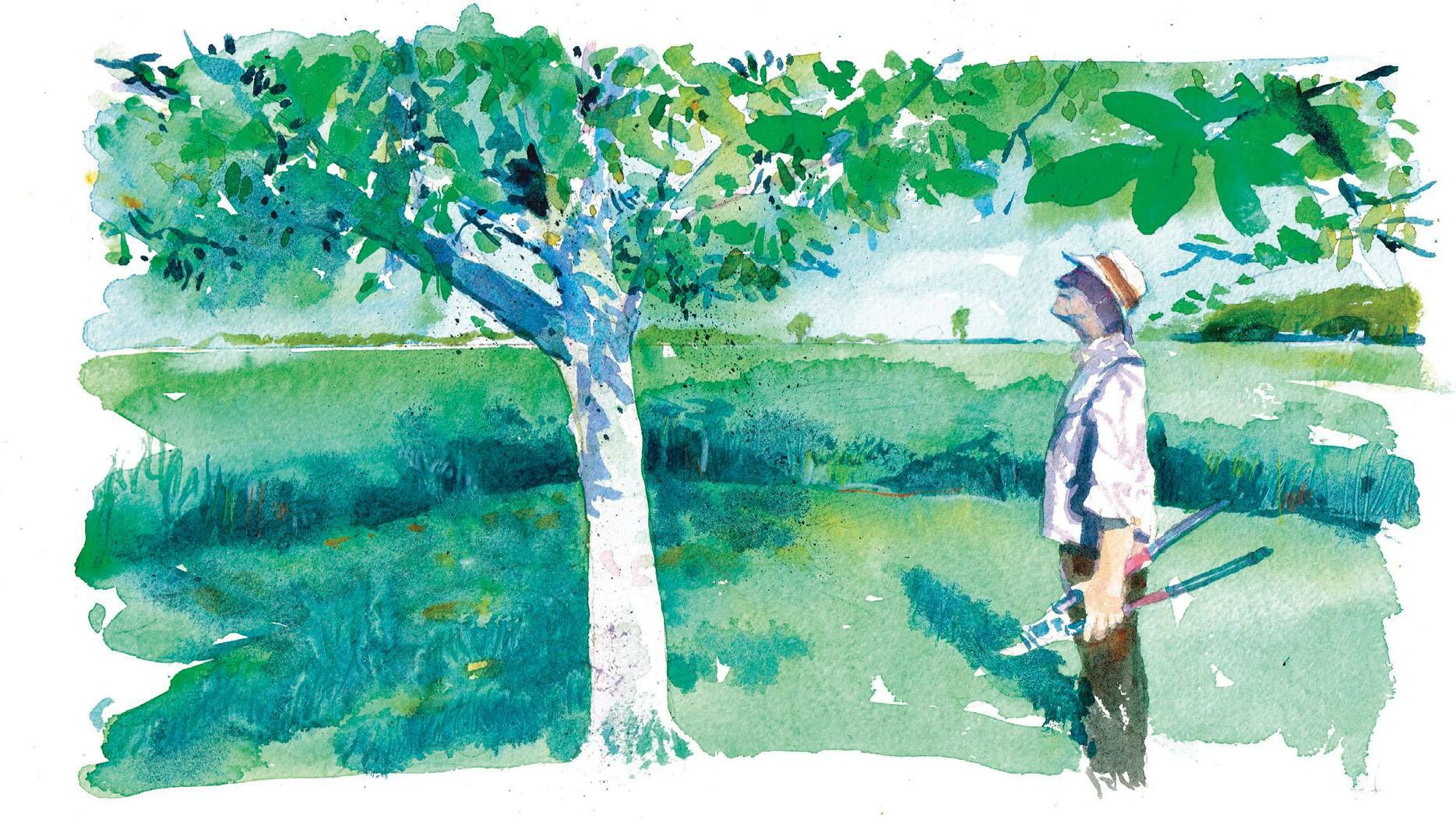
S TANDING under the beech tree, looking up into the cave roof of blue shade, the density of the tree’s canopy blocking out the day’s sunshine. In late spring and summer, the beech is the parasol tree, casting glad, cooling shade for the weary walker, the picnicker and, doubtless, once upon a time, for persecuted outlaws, the Robin Hoods.
No British tree, not even oak, has such presence as beech. A single beech tree, such as this one in the copse, is sufficient in itself to create the quintessence of beechwood: the sense of entering a churchy, sacred space: the immense grey pillars, that vaulted ceiling, the mystried gloom.
Oak is the hail-fellow King of the Wood, beech the Ice Queen. Oak is one trope for Britain, hearty, rustic and guileless; the smooth- boled beech is the alternative Britain, the shadow self, secret, minimalist, spiritual.
Oh, yes, and standing under a beech causes me to philosophise even when working, as I am this morning, lopping select lower branches with long-handled pruners to make ‘tree hay’. Collecting tree leaves for feeding livestock, usually from pollards, is a vanishingly small component of farming, although once it was widespread across Europe and likely predates the scything of grass to make ‘proper’ hay.
I only have a handful of pollards, so I prune lower limbs of hazel, beech, sallow, hawthorn, blackthorn, elm, ash, lime and field maple in copse, hedge, orchard and garden. However, only those trees brazenly daubed by a dob of white paint are pruned, the trees/bushes I know categorically do not have birds nesting below 20ft and so remarked.
Diese Geschichte stammt aus der May 29, 2024-Ausgabe von Country Life UK.
Starten Sie Ihre 7-tägige kostenlose Testversion von Magzter GOLD, um auf Tausende kuratierte Premium-Storys sowie über 8.000 Zeitschriften und Zeitungen zuzugreifen.
Bereits Abonnent ? Anmelden
Diese Geschichte stammt aus der May 29, 2024-Ausgabe von Country Life UK.
Starten Sie Ihre 7-tägige kostenlose Testversion von Magzter GOLD, um auf Tausende kuratierte Premium-Storys sowie über 8.000 Zeitschriften und Zeitungen zuzugreifen.
Bereits Abonnent? Anmelden

A trip down memory lane
IN contemplating the imminent approach of a rather large and unwanted birthday, I keep reminding myself of the time when birthdays were exciting: those landmark moments of becoming a teenager or an adult, of being allowed to drive, to vote or to buy a drink in a pub.

The lord of masterly rock
Charles Dance, fresh from donning Michelangelo’s smock for the BBC, discusses the role, the value of mentoring and why the Sistine chapel is like playing King Lear

The good, the bad and the ugly
With a passion for arguing and a sharp tongue to match his extraordinary genius, Michelangelo was both the enfant prodige and the enfant 'terribile’ of the Renaissance, as Michael Hall reveals

Ha-ha, tricked you!
Giving the impression of an endless vista, with 18th-century-style grandeur and the ability to keep pesky livestock off the roses, a ha-ha is a hugely desirable feature in any landscape. Just don't fall off

Seafood, spinach and asparagus puff-pastry cloud
Cut one sheet of pastry into a 25cm–30cm (10in–12in) circle. Place it on a parchment- lined baking tray and prick all over with a fork. Cut the remaining sheets of pastry to the same size, then cut inner circles so you are left with rings of about 5cm (2½in) width and three circles.

Small, but mighty
To avoid the mass-market cruise-ship circuit means downsizing and going remote—which is exactly what these new small ships and off-the-beaten track itineraries have in common.

Sharp practice
Pruning roses in winter has become the norm, but why do we do it–and should we? Charles Quest-Ritson explains the reasoning underpinning this horticultural habit

Flour power
LONDON LIFE contributors and friends of the magazine reveal where to find the capital's best baked goods

Still rollin' along
John Niven cruises in the wake of Mark Twain up the great Mississippi river of the American South

The legacy Charles Cruft and Crufts
ACKNOWLEDGED as the ‘prince of showmen’ by the late-19th-century world of dog fanciers and, later, as ‘the Napoleon of dog shows’, Charles Cruft (1852–1938) had a phenomenal capacity for hard graft and, importantly, a mind for marketing—he understood consumer behaviour and he knew how to weaponise ‘the hype’.